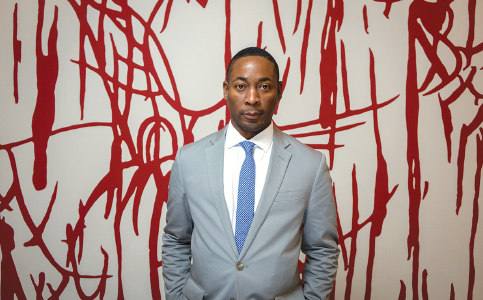Visual artists telling the world about the Miami experience
Advertisement

Working as a united front, Pérez Art Museum Miami’s Franklin Sirmans says art institutions are working together to further the message that visual artists are here to stay.
Museums work around the idea of offering something specifically for Miami and its immediate surrounding community but for an international community of visitors as well, Mr. Sirmans said.
“And that’s what is making a difference for us globally,” he said. “People are taking notice of what we’re doing here.”
Miami has a really huge ecosystem of local artists who are sharing ideas and spotlighting the city, Mr. Sirmans said. “Our artists tell the world so much about an experience that is often Caribbean and experience that is sometimes or often about an immigration story or that relates very specifically to our region.”
Obviously, it doesn’t hurt that the arts community also had a little spotlight thrown on commitment and reference points to digital art and new technology conversation on NFTs, he added.
“If I were to keep it in the realm of the visual,” Mr. Sirmans said, “let me just say I’m very excited about an artist named Jason Seife.”
Mr. Seife is a local artist who has experience in working with painting and digital art, he said. “I think he is really apropos of the moment and makes some incredibly intricate and really beautiful artworks.”
During a school field trip, Mr. Seife recalls visiting Miami Art Museum, which is PAMM today, and saying to himself that one day he would love to see his artwork at the museum. Fast forward 20 years later, he is now planning to have his very first Miami solo exhibition next year at PAMM.
“I had this cool moment where I realized that my dream actually came into fruition,” Mr. Seife said.
In his newest body of work, Mr. Seife references old Persian carpets, which have been a prominent part of his childhood.
“I found them aesthetically pleasing because they reminded me of a poem and through the process of doing that, I actually started exploring the meaning behind them,” he said.
Mr. Seife said he traveled to Syria to better understand these carpets and discover his father’s family lineage. “I was able to bring some aspects of that back home,” he said.
For his PAMM exhibition, Mr. Seife is painting Middle Eastern-inspired carpet design paintings on distressed concrete.
“But before I started painting, I have a digital render of exactly what I’m going do,” he said, “So, it’s a very calculated, modern approach to creating these pieces that will look timeless and unique.”
Inspired by an art form that has been around for centuries, Mr. Seife said, he uses mediums and colors through digital applications that were not available during the original adaptation of the work.
He first digitally draws out and colors a quarter of the carpet on his iPad, so he can have an idea of what the art piece would look like. He then uses that as a reference image to start his painting on the canvas.
“There’s a big buzz around digital art,” he said. “It’s something that I’ve fully accepted and brought into my practice as well.”
Newer generations have grown up in a digital world and the way they express themselves is in that digital space, Mr. Seife said. In the next 20 years, he forecast, there will be a cluster of digitally curated art exhibits.
“That’s not to say that museums or physical spaces will be obsolete. Absolutely not,” he added. “But I do think that there will be this kind of parallel space. whether it be a painting or whether it be something that’s digital. Both versions can be so much as making a painting that has a digital counterpart.”
It’s not to say that that one is replacing the other but they’re working in tandem, Mr. Seife said.
“It’s using digital aspects that just make your work easier or easily reproduced,” he said, “and use it to reach a level in my paintings I couldn’t just do by hand or completely freestyle.”
With an NFT tied to a physical painting, collectors or visitors can see the provenance of when it was created and who’s owned it, along with artist royalty benefits, Mr. Seife said, “which is something that we’ve never seen before in the art world.”
“Miami is being a forefront for not only different cultures and different arts but now in crypto,” he continued. “It has been a huge technological advancement for the art spectrum.”


